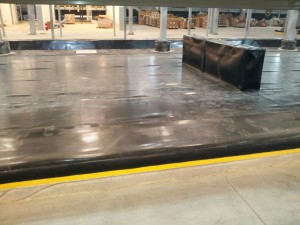PVC LINERS VS APPLIED COATINGS AND THICKNESS
In an earlier post I listed some of the benefits that a flexible PVC liner can offer over an applied coating in providing corrosion resistance to a concrete containment area. I want to expand on one of those benefits; the uniform thickness of a PVC liner.
The raw material for flexible PVC liners is made from an extrusion process. That process ensures a uniform thickness throughout the material. Therefore, when you purchase, say a 60 mil PVC liner, all areas of the liner are 60 mil thick. There aren’t areas that are slightly thinner and would therefore be a weaker point of the liner. From liner to liner the extrusion process ensures that uniform thickness.
The thickness of an applied coating is based solely on the applicator who is performing the work. Each area of application needs to be tested as the coating is being applied to ensure that the thickness is at least some level of bare minimum thickness. Should an area not be properly tested that area may have less coating then other areas of the containment area. This area would naturally be weaker or have a shorter service life than other areas. Effectively the entire coating is only as good as this thinner area.
Besides just the integrity of the applicator other factors can also play a role in the non-uniformity of an applied coating. Differing grit blast profiles throughout the containment area can result in different thicknesses of coatings. Also, factors like pH levels, air temperature, air quality, and humidity can affect the application of a coating and the thickness level that finally cures.
With a flexible PVC liner, no matter who performs the installation, you are ensured of a uniform thickness throughout the entire containment area and can rest assured that you have received what you have paid for.
Tags: coatings
